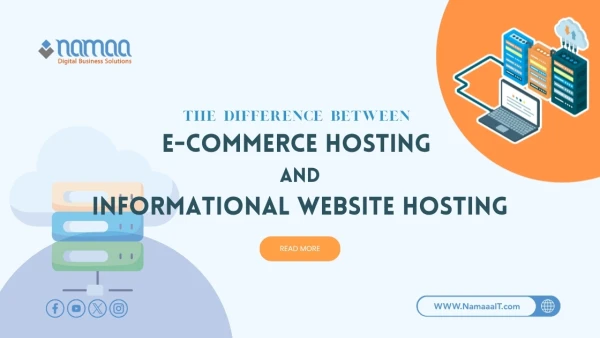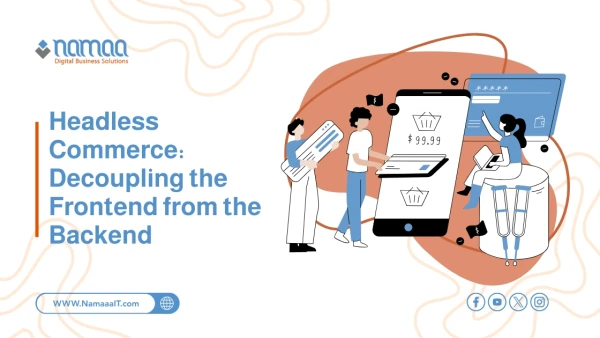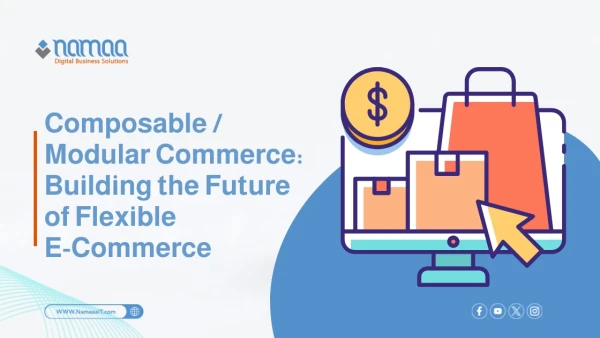Imagine a world where shipping and warehousing are managed with extreme precision, where parcels are tracked moment by moment, and where logistics decisions are made based on real-time data.
This is the new reality being shaped by the Internet of Things (IoT) in the e-commerce logistics sector. With increasing demand for speed and accuracy in product delivery, it has become essential to adopt smart technologies that enhance efficiency and reduce costs. Through connected devices, smart sensors, and real-time data analytics, IoT is opening vast possibilities for reshaping supply chains.
In this article, we explore how IoT is contributing to the future of e-commerce logistics services and the profound transformations it is driving in this critical sector.
What is the Internet of Things (IoT), and why is it revolutionizing logistics?
The Internet of Things (IoT) is a network of physical devices connected to the internet, capable of collecting and exchanging data without direct human intervention. This includes sensors, cameras, scanners, and GPS devices that monitor everything happening in physical environments in real time.
In a logistics context, this means that every stage in the supply chain—from inventory to final delivery—can be connected, intelligent, and remotely controlled.
The radical transformation IoT brings to logistics is not just about automation but also about changing how decisions are made.
Companies no longer rely on daily or weekly reports but on accurate real-time data that can be acted upon instantly.
For example, if a product shipment is delayed, the system can automatically suggest an alternative route or notify the customer with an updated estimated delivery time.
This ability to view every component of the logistics chain in real time disrupts traditional workflows, reduces waste, and increases customer satisfaction.
That’s why IoT is seen not as an additional technology, but as a future-proof infrastructure that is redefining how the entire sector operates.
Real-Time Tracking: How IoT is Changing Shipping and Delivery Rules
In the past, companies relied on periodic updates to track shipments, which were often inaccurate or delayed.
Today, thanks to IoT technologies, real-time tracking has become a core element of logistics operations, bringing a significant leap forward in shipping and delivery.
GPS devices and smart sensors embedded in shipments or vehicles send live data on location, temperature, humidity, and even vibrations.
This allows companies to monitor every shipment from the moment it leaves the warehouse to the moment it’s delivered to the customer.
The result? Complete transparency and a significant reduction in the chances of loss or damage.
Additionally, this data can be used to make instant decisions during emergencies like traffic jams or bad weather.
The system can reroute drivers automatically, maintaining delivery times without delays.
From the customer's perspective, real-time tracking builds trust and reduces inquiries and after-sales support needs.
Customers no longer need to call for updates—they can track their shipment directly via an app or website.
Related: Learn about the role of blockchain in securing online payments
Smart Inventory Management: From Traditional Warehouses to Automated Systems
Inventory management has long been one of the most complex challenges in logistics.
In traditional warehouses, processes depend heavily on human intervention, increasing the risk of errors and delays.
But with IoT, the rules have changed dramatically—inventory systems have become smarter, more accurate, and faster.
Smart inventory relies on RFID sensors, high-resolution cameras, and connected systems that can track every product inside the warehouse—its location, condition, and remaining quantity.
As soon as a product is received or taken out of inventory, the system is updated automatically with no need for human input.
This has a direct impact on reducing counting errors, preventing stockouts, and providing clear visibility for better strategic decisions.
For example, if a certain product is selling quickly, the system can alert the purchasing team to reorder it before it runs out.
If another item is moving slowly, it can be redistributed to higher-demand areas.
IoT also enables automated ordering, replenishment, and redistribution processes, and can even detect malfunctions in cooling or transport systems in real time—critical in sectors like food and pharmaceuticals.
read more: Google Shopping Ads vs. Meta vs. TikTok: Which Achieves the Best Conversion Rate in 2025?
Boosting Efficiency and Cutting Costs: How IoT Helps Achieve Both
One of the greatest benefits of IoT in logistics is its ability to enhance operational efficiency and reduce costs.
Instead of relying on estimates or delayed data, IoT technologies empower companies to make precise, real-time decisions, reducing waste in time and resources.
For instance, by tracking vehicle performance and fuel consumption in real time, companies can identify inefficient vehicles or detect poor driving patterns.
This allows for preventive maintenance and behavior correction, extending asset life and reducing unexpected breakdowns and costs.
IoT data can also improve route planning and reduce mileage, directly cutting fuel costs and lowering carbon emissions.
In warehouses, sensors and automation systems accelerate loading and unloading operations, minimizing the need for extra labor and saving time.
Even in energy management, IoT devices can monitor electricity and water usage inside facilities and identify opportunities to conserve resources without sacrificing performance.
The end result is a smarter, more integrated logistics system capable of delivering ongoing cost savings without compromising service quality.
That’s why IoT is viewed as a strategic tool—not just another tech trend.
How Major Companies Are Using IoT in Their Logistics
Top companies like Amazon, DHL, and Maersk are leading the way in adopting IoT technologies to enhance their logistics operations—driving major improvements in efficiency, transparency, and customer experience.
Amazon is a prime example of this trend. It operates a network of smart robots in its warehouses—known as Amazon Robotics—that automate storage and retrieval processes.
Additionally, Amazon uses Amazon Locker to offer self-service pickup points for customers, improving delivery speed and flexibility.
It also uses IoT technologies to monitor vehicle performance and optimize delivery routes based on real-time data.
DHL has made significant investments in IoT.
Through its SmarTrucking project, it equipped its fleet with smart trucks embedded with sensors, enabling real-time shipment tracking.
This reduced invoice errors by 30% and sped up trip creation by 50%.
DHL also uses IoT to monitor temperature and humidity inside containers, ensuring the safety of sensitive shipments.
Maersk, the global shipping giant, uses IoT to monitor refrigerated containers (reefers) in real time—tracking temperature and humidity throughout transit.
It also uses smart sensors to improve predictive maintenance of its equipment, minimizing unplanned downtime and increasing operational efficiency.
These case studies demonstrate how IoT can revolutionize logistics by enhancing efficiency, cutting costs, and improving the customer experience.
Related: Discover voice commerce
FAQs about IoT in E-Commerce Logistics
1. How is IoT used to forecast demand?
IoT devices analyze sales and purchasing behavior in real time, helping companies predict demand and plan inventory more accurately.
2. Can IoT be used for fleet maintenance?
Yes. Sensors monitor engine health, tire condition, and fuel consumption to enable predictive maintenance and prevent breakdowns.
3. What is IoT’s role in improving delivery experience?
It optimizes route selection, manages parcels through smart locks, and provides real-time notifications for customers about delivery time and location.
4. How does IoT improve warehouse safety?
By monitoring movement, temperature, and environmental risks, and instantly alerting staff to hazards or unsafe behavior.
5. Can IoT be integrated with AI in logistics?
Yes. AI systems can use IoT data to make smart automated decisions—like optimizing delivery routes, scheduling resources, or predicting risks before they occur.
Summary
✅ Over 70% of global companies using IoT in their supply chains reported improvements in operational visibility and transparency (according to Deloitte).
✅ Amazon relies on more than 500,000 smart robots in its warehouses to speed up storage and delivery using IoT.
✅ DHL’s SmarTrucking project in India reduced billing errors by 30% and sped up dispatch time by 50% using IoT-connected trucks.
✅ Using IoT to monitor container temperature reduced the spoilage of sensitive shipments by up to 40% at shipping companies like Maersk.
✅ Companies using smart inventory IoT systems reduced operating costs by up to 20% and improved inventory accuracy to over 95%.

.webp)







